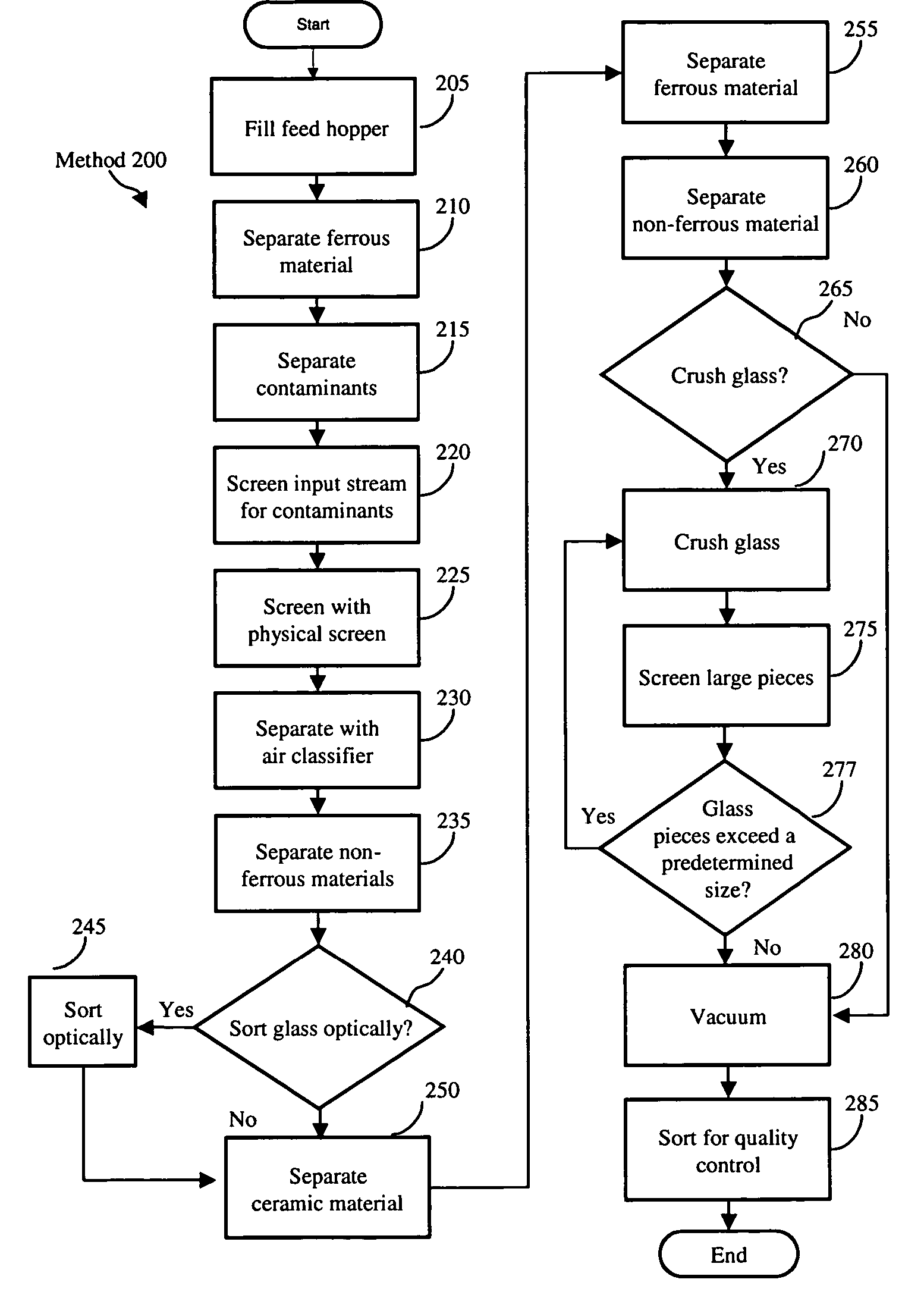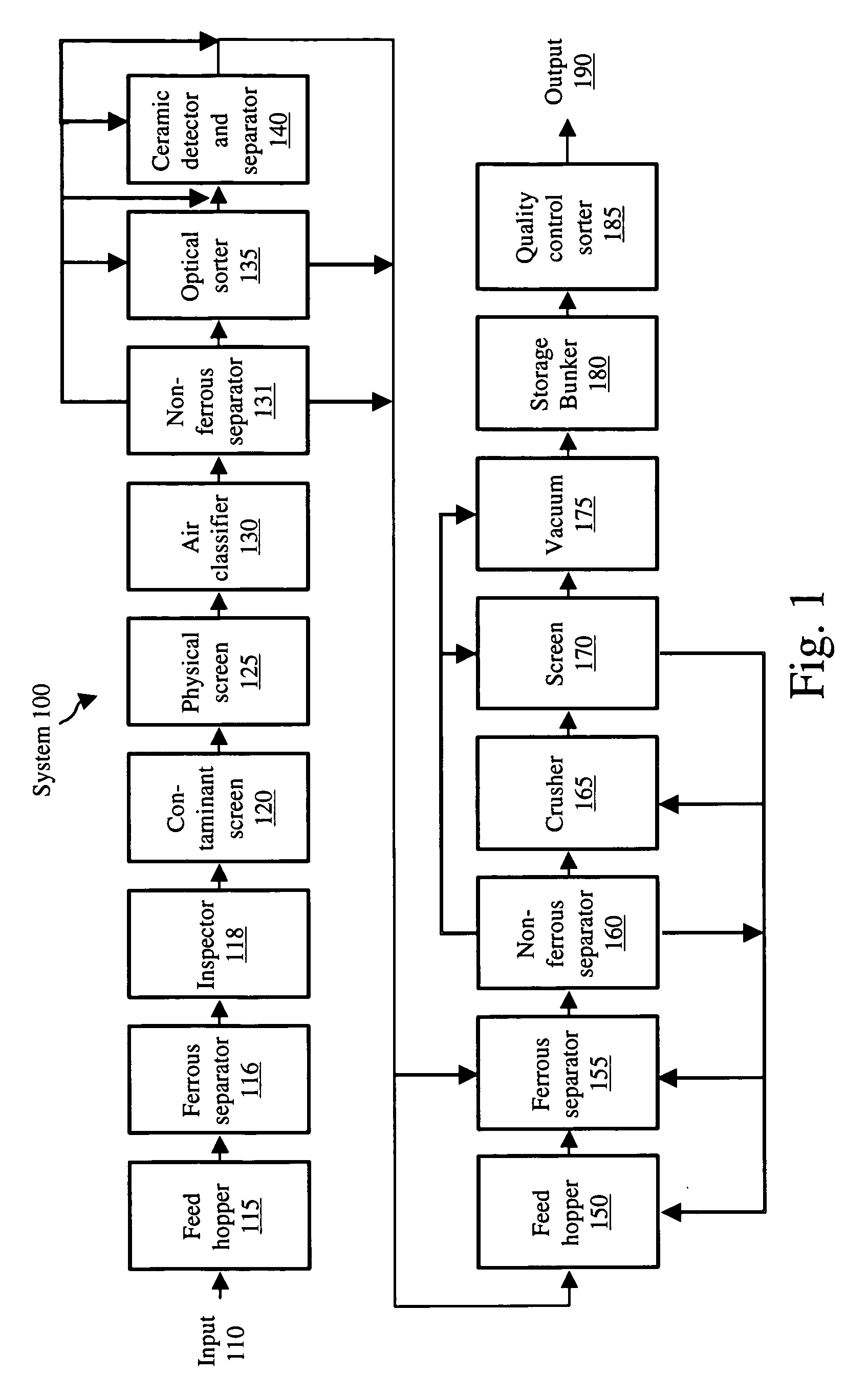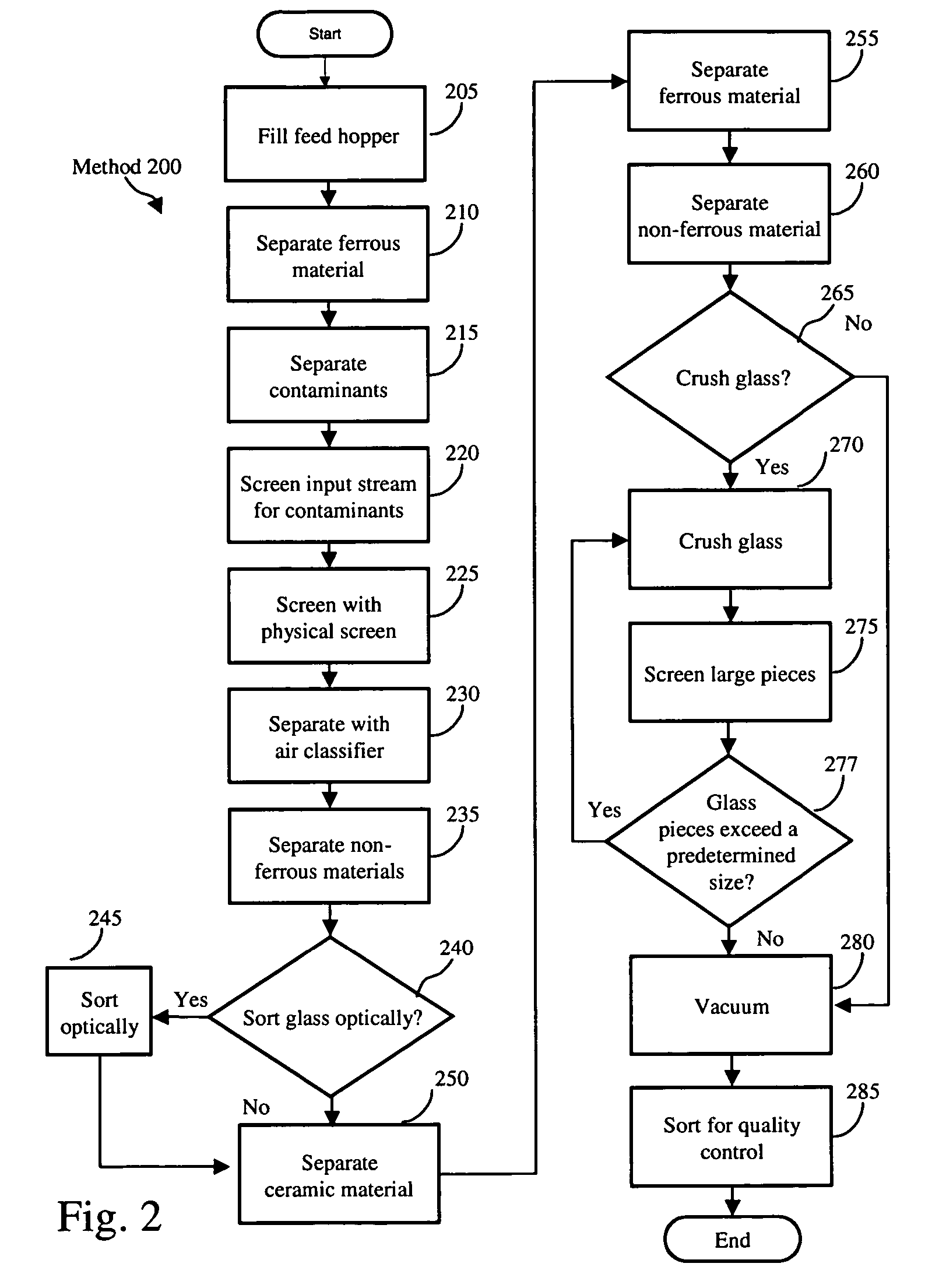Systems and methods for glass recycling at a beneficiator and/or a material recovery facility
a technology of beneficiator and material recovery facility, applied in the direction of gas current separation, applications, instruments, etc., can solve the problems of inactive second line, laborious and costly current manual and automated sorting methods, and general economic inability to color sort mixed cull
- Summary
- Abstract
- Description
- Claims
- Application Information
AI Technical Summary
Problems solved by technology
Method used
Image
Examples
Embodiment Construction
[0021] The inventors have determined that it would be advantageous to simplify the glass sorting and cleaning process that can be used by a beneficiator and / or a material recovery facility (MRF). It would be advantageous to enable a beneficiator and / or a MRF to recycle glass without having to sort the glass by color. It would be also advantageous to enable a beneficiator and / or a MRF to process mixed cullet as well as single-colored glass. In addition, it would be advantageous to enable a beneficiator and / or a MRF to combine increasing quantities of mixed cullet with a color sorted glass stream. It would be advantageous to enable a beneficiator and / or a MRF to directly or indirectly supply glass plants with cullet that can be used in conjunction with, for example, the de-coloring / coloring technology described in U.S. Pat. Nos. 5,718,737 and 6,230,521, the disclosures of which are incorporated by reference in their entirety.
[0022]FIG. 1, generally at 100, illustrates a block diagram...
PUM
| Property | Measurement | Unit |
|---|---|---|
| size | aaaaa | aaaaa |
| size | aaaaa | aaaaa |
| size | aaaaa | aaaaa |
Abstract
Description
Claims
Application Information
 Login to View More
Login to View More - R&D
- Intellectual Property
- Life Sciences
- Materials
- Tech Scout
- Unparalleled Data Quality
- Higher Quality Content
- 60% Fewer Hallucinations
Browse by: Latest US Patents, China's latest patents, Technical Efficacy Thesaurus, Application Domain, Technology Topic, Popular Technical Reports.
© 2025 PatSnap. All rights reserved.Legal|Privacy policy|Modern Slavery Act Transparency Statement|Sitemap|About US| Contact US: help@patsnap.com



